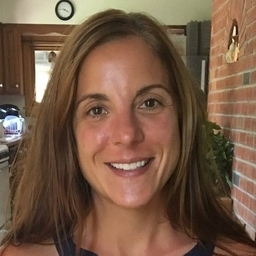K-12 Roundup of Tools and Resources: Protocols and Processes in Personalized Learning Classrooms
Topics
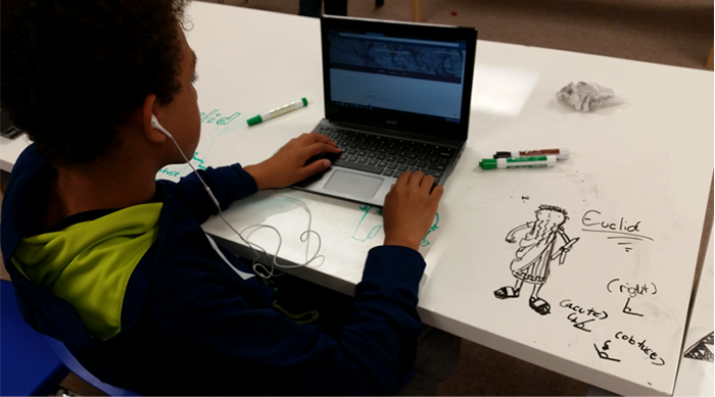
We’ve all had the experience of truly purposeful, authentic learning and know how valuable it is. Educators are taking the best of what we know about learning, student support, effective instruction, and interpersonal skill-building to completely reimagine schools so that students experience that kind of purposeful learning all day, every day.
Practitioner's Guide to Next Gen Learning
What new classroom protocols and processes are bubbling up in personalized learning environments? Find out in this insightful resource roundup for the Friday Focus: Practitioner's Guide to Next Gen Learning.
It’s been seven years since I was a classroom teacher. And while I worked in classrooms as a district leader after that, I recently found myself wondering which practices teachers rely most heavily upon with regard to personalized learning. How do teachers incorporate individual, self-paced work, small group, and sometimes whole group instruction? I also wonder if new processes, protocols, and approaches are bubbling up in personalized learning environments.
Curious about the classroom protocols and processes in use in NGLC schools, I asked teachers at CICS West Belden, Thrive, and Whittemore Park this question: If you had to pick 1-3 of the best protocols for making learning visible (or entry routines or exit routines) in your personalized learning classroom, what would they be and why?
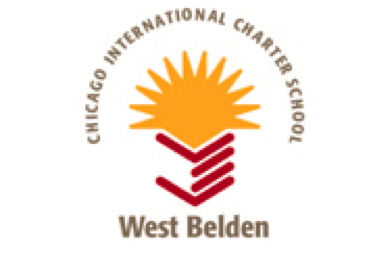
Chicago International Charter School (CICS) West Belden: A school with a 95 percent low-income population and 91 percent Hispanic student population. CICS West Belden is transforming the school to fully blended with embedded tactics and strategies to personalize learning for every student. Students progress through individualized learning plans during three hour rotational labs, where they learn through digital and adaptive programs, collaborate with peers, and participate in individual tutoring sessions and small-group instruction.
CICS teachers Rachel Stanaszek and Lauren Rosen shared the processes they’ve embedded into their personalized learning model this year:
Flexible Learning Environment - Rachel, Lauren, and their colleagues create inviting learning spaces within their classrooms and adjust those spaces based on student voice. They teach students how to choose spaces that work best for them based on the learning experience.
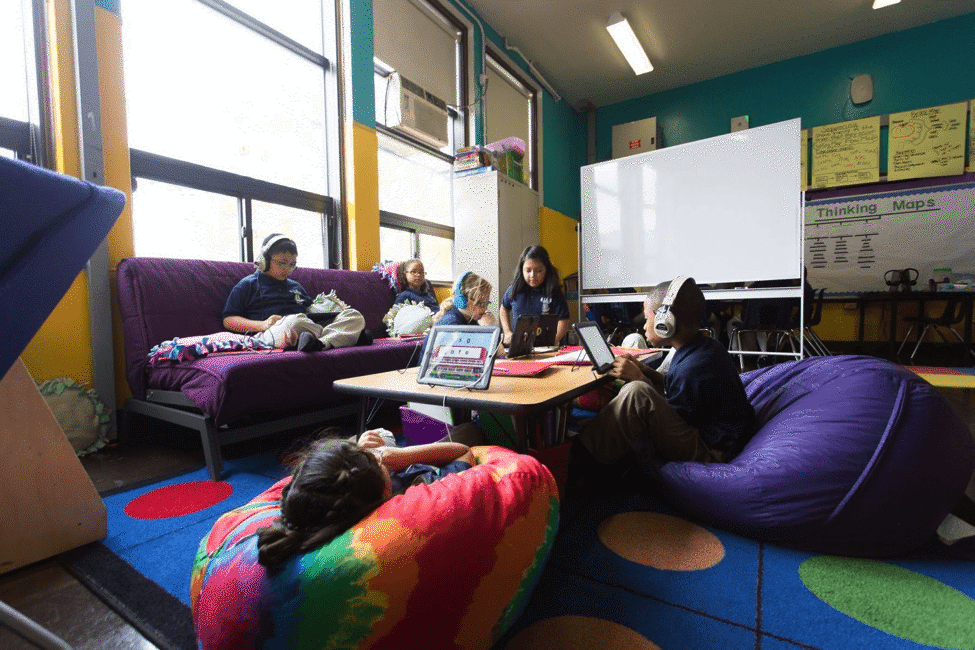
Learner Profile - Students fill out a teacher-created interest survey (grade 1-2-3 example and grade 4-5 example) and teachers use a one-on-one conference with each student to complete the survey. Rachel and Lauren engage in listening conferences with parents to elicit information about their students. The teachers use this to create a learner profile for each student (grade 3 example, called Achievebook). These profiles drive the work of students’ personalizing learning, beginning with a student-teacher conference to discuss the learner profile and its implications for learning. Learner profiles are foundational; they are frequently updated to reflect current goals and always accessible to students.
Personalized Learning Paths - Students take personalized learning paths to demonstrate mastery on key skills and strategies embedded in projects. Rachel and Lauren shared their process of designing personalized learning paths for students:
- Teachers identify components to be included in a rubric: content, process, collaboration, organization and/or presentation.
- Teachers define standard or skill based on CCSS
- Teachers and students define expectations within each component
- Teachers model each expectation
- Teachers model reflection process for each expectation
- Teachers make rubric accessible for all students
- Students begin documenting daily goals based on expectations they are working towards
- Teachers act as mentors, conferencing with students throughout this process
- Student presentations occur once all learning expectations have been met
- Students complete a reflection document related to project and share with teacher
See examples of personalized learning path rubrics: grades 1-3 literature rubric, grade 1-3 cause and effect rubric, grades 4-5 social studies project and grades 4-5 reading project.

Thrive: A K-8 school in San Diego, California. The blended PBL learning model at Thrive integrates technology throughout a curriculum built upon project-based learning, targeted instruction, and tinkering.
Educators Jaclyn Vasko and Joseph Acker shared classroom protocols and processes teachers have found most helpful in personalized learning classrooms:
Learner Profile - Each Wednesday is used as a flexible day for one-on-one goal check-ins with students. On this day, educators modify their schedules and divide two groups of students between three teachers. This allows smaller, more manageable groups and gives educators more time to spend in one-on-one goal meetings. While students are working individually or in small groups on goal practice via books and digital content, one or more of the teachers meets with individual students to determine progress against a co-created goal.
During the goal check-in time, students are pulled for 1:1 time with the teacher to test for mastery. This flexible, personalized 1:1 time lasts for as long as necessary for the student. From there, teachers determine if the student has met his/her goal(s) or is still in need of more practice. If the student met his/her goal, another goal is set and logged into the student’s personalized learning plan (PLP). It becomes that student’s focus in the subject for the next month or however long it takes to master. If a student hasn’t met mastery, the teacher marks “Still practicing” and sends supplemental extension work home, provides action steps for helping the child develop the skill, and modifies rotation plans and grouping in the classroom.
Each Wednesday, teachers hone in on a particular topic: math, reading, writing, exploratory, etc. and check in on each student’s personalized goal that was co-created from ongoing small group rotations, student work data, and data from online learning programs. This is an example from Kindergarten:

This is one piece of the goal document found within the student’s PLP.
Flexible Learning Environment - Teachers incorporate small group rotations into everyday instruction or math, literacy, PBL, and Exploratory. Groups range from 3-4 students depending on the subject or day. The groupings are flexible and very from leveled groups to interest groups to mixed abilities groups. The small size allows for close learning experiences for both students and the teacher. During this time, teachers personalize learning to follow students’ interests. Sometimes they rotate around a particular topic/objective and other times they rotate around practicing skills like independent reading, online ELA learning programs, teacher guided skill practice, or immediate independent skill practice. Check out the literacy rotations from a Transitional Kindergarten-Kindergarten classroom.
Educator Feedback and Growth - Currently, Thrive educators are working on a way to use QR codes combined with Google docs to elicit timely feedback from students, staff, and visitors. Unique QR codes will be displayed outside each classroom that link to a google form co-developed by the staff. Using a free QR code reader app, visitors simply scan the code which then activates an observation form that encourages ongoing feedback for teachers.
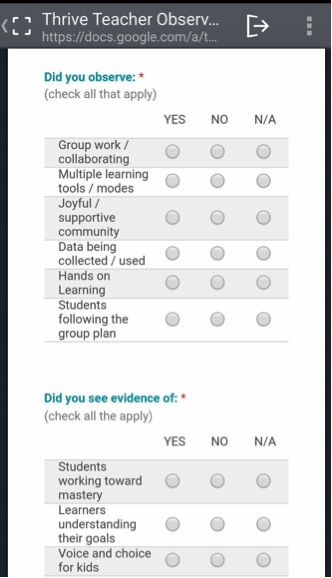
Goggle Classroom and Docs - Thrive middle school teachers recently launched Google Classroom to serve as a management system for their Google docs. Because Google docs is used across the curriculum, the system allows teacher-teams to co-manage student work. Each day teachers collaborate to create a daily agenda posted on Google Classroom for students to review and reference as needed. Agendas are working documents and are updated by the team throughout the day with discussion notes, new links, images, and new understandings. Google docs are customized, distributed, and collected in Google Classroom allowing for a more seamless and timely feedback cycle. This system encourages students and teachers to collaborate anytime and anyplace.

Whittemore Park Middle School, Horry County Schools: A 6-8 middle school in Conway, South Carolina. Whittemore Park Middle School uses the iCAN model: individualized, college and career readiness, aspirations of students,and network of support designed around a blended core academic curriculum and carefully constructed system of supports.
Educators Heather Lewis, Jennifer Howard, and John Williams shared process-related tips they’ve found most helpful in their blended, personalized learning classrooms:
- Make sure parents/students understand the purpose of each rotation and rationale for strategic grouping. Make sure group names do not portray high/medium/low. When groups change, as they will often, post new groups digitally as well as in the classroom. This saves instructional time.
- In the beginning of the school year, practice transitions with a timer. It’s engaging to play music too. Work on keeping the rotational pattern the same, so students can learn the rotations—and emphasize to students that smooth transitions are non-negotiable.
- Give students assigned seats in all rotational groups. That way you can strategically place them and reduce transition times.
- Make sure students have a place to keep their class work/assignments. At Whittemore Park, teachers use 5-pocket expandables. We have a section for each of the three rotations in our model. This makes it easy for students to locate their work and keep organized, and also eliminates the need for collecting/passing out student work unless it must be graded.
- Communicate weekly expectations for students on Monday to students and parents. It is especially important for students to understand digital content expectations in advance. This information can be posted via Edmodo, class website, Google classroom, or a traditional newsletter.
- Allow students to submit assignments digitally when possible.
- Track students’ progress/mastery of lessons. Teachers use a visual tracking system at the back of the room to show digital content progress or to track mastery of lessons within a certain unit.
Heather Lewis, 6th grade ELA teacher, developed an ABC schedule to maximize time spent in rotations.
More Classroom Protocols
Looking for other high-quality examples of protocols and processes to build classroom culture that supports personalized learning? Check out the resources below.
- Blended Learning Master Teacher Project - The Learning Accelerator (TLA), a nonprofit organization supporting the implementation of high-quality blended learning in school districts across the U.S., and grantee BetterLesson, recently launched the Blended Master Teacher Project, a new online resource showcasing the practices of top blended learning teachers nationwide with 53 strategy videos. These videos showcase content from 11 stellar teacher leaders and strategies for building classroom culture and processes to support personalized and self-paced learning.
- A Guide to Creating a Collaborative Learning Environment - Read about how high school educator Kerry Gallagher sets up collaborative learning experiences via groups of 4-6 students solving a problem or answering an essential question.
Looking for more information on learner profiles? This is an area of interest for many of our grantees and we’d especially love to share examples of Learner Profiles in NGLC schools. Please drop me a note if you are interested in being a part of the Learner Profile feature at sblouin@educause.edu. Thanks!
- Parent-Managed Learner Profiles Will Power Personalization - Tom Vander Ark of Getting Smart defines learner profiles and describes how parents might manage them to maximum benefit for their children.
- Personalized Learning Plan - Caliber School, a K-8 school in Richmond, California operates from the belief that the innovations in its model will allow 100% of its students to graduate ready to attend and succeed in a competitive four-year college and beyond. Personalized learning is a core component of Caliber’s model and personalized learning plans are one of the many ways personalized learning is delivered to students at Caliber.

